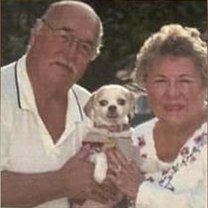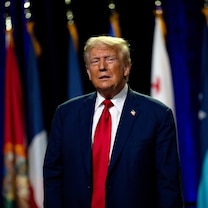OPINION: What Happens to Me When I See a Cop
We have to suppress all of this pain and pretend we are truly free.
— -- I was 12 the first time a police officer pulled his gun on me.
I was walking home from the store in Detroit with the gallon of milk my mother sent me to buy when an unmarked car pulled beside me. The driver rolled down his window and asked me to stop. My mother warned me about kidnappers and told me to run away from strangers so, quite naturally, I backed away from him.
That’s when the car stopped, the man jumped out, pulled out his gun and told me not to move or he was going to shoot me. I didn’t know he was a police officer looking for a burglar until I was handcuffed and in the back of his car.
After 15 minutes, he said I wasn’t the person he was looking for and let me go. I grabbed the milk, walked home, went into one of the closets in our apartment and cried.
Even now, at the age of 44, I still have nightmares about that day. Seeing the gun pointed at me, thinking I was going to die … and for what?
Among the least-talked about byproducts of witnessing the kind of police violence seen in the Walter Scott video … the Laquan McDonald video … the Eric Garner video … the Sandra Bland video … John Crawford III’s video … and, now, Alton Sterling’s are the psychological and emotional scars they leave in their wake.
Just listen to the wails and screams of the people who recorded one of the videos capturing two Baton Rouge police officers pinning down Sterling as he is shot multiple times, killing him.
Given what we know of how the human mind deals with tragedy, we know the witnesses to the shootings are not OK. Not right now. They may cope with what they’ve experienced, but do not mistake that for having peace.
The anguished cries of those witnesses have sadly become an all-too-familiar song for black America. Its melody echoes that of our ancestors who watched slave traders remove the sick from cages and dump their bodies into the Atlantic.
It is in harmony with the hymnal heard when the murdered were found hanging from trees. There are no choruses, no refrain. Only generation after generation after generation of trauma made worse by the fact we have to suppress all of this pain and pretend we are truly free.
But we are not truly free.
The second time an officer pulled his gun out on me I was parked in the driveway of my house. By then in my 30s, I didn’t even know the patrol car was behind me until I opened the door and heard the words “don’t move.” I then heard “I need back up” and within minutes I was surrounded.
Wrong guy, again.
I know I am not alone when I say most times when I walk by an officer I worry. I try to smile. I may even speak. But my body involuntarily tenses up, my heart rate increases, I am careful not to make any sudden movements.
I know I am not alone when I say, at times, I feel under siege. Despite the socio-economic distance I have placed between me and that 12-year-old boy sent to the store that day, I know that money and degrees cannot stop me from hearing the song of my ancestors mimicked in the cries of Sterling’s children.
I have spent my entire adult life trying to negotiate the anxiety that is unique to black America and now despite my best attempts to shield my son from the same fate, I helplessly watch as he develops symptoms of his own.
Now 19, he knows when he is being followed in stores.
Slighted in school.
Watched by police.
We were all told about Sterling’s criminal record before we learned the names of the officers involved in his killing. The classic playbook move of demonizing the dead to justify police action.
It works like a tranquilizer to those not directly involved. It distracts otherwise fair-minded white people from noticing the pattern of officers’ claiming to fear for their lives being followed by video that demonstrates otherwise. It provides those who are not so fair-minded with talking points.
“Oh, my God, please don’t tell me he’s dead … please don’t tell me my boyfriend just went like that.”
Those are the prayers heard in the Falcon Heights, Minnesota, video now circulating on social media. Philando Castile is seen unresponsive and bleeding in the driver's seat, the emotional officer still pointing his weapon at the man.
Diamond Reynolds, Castile’s girlfriend, is in the passenger’s seat live-streaming the entire episode on Facebook, her 4-year-old daughter nearby. The officer shot Castile four times, according to Reynolds. She said they were pulled over for a busted taillight.
Officer: I told him not to reach for it. I told him to get his hand out.
Reynolds: He had, you told him to get his I.D., sir, his driver’s license. Please don’t tell me he’s dead.
Castile, a cafeteria supervisor for a Montessori school, died.
He would have turned 33 Friday.
We talk about the indictments, the protests and the law but we don’t spend much time discussing the emotional toll that watching police kill people of color, with seemingly no accountability, has on a community.
Freddie Gray just died while in police custody. Sandra Bland just died while in police custody.
Tamir Rice, a 12-year-old boy who had been sitting on a swing in a park, is shot by an officer whose former employer said was mentally unfit for the profession. Neither the officer nor his partner administer first aid. And we see all of this disregard for this little black boy’s life on video.
Tears filling my eyes as I type … I am not O.K.
We are not OK.
The opinions of LZ Granderson, an ABC News analyst and special correspondent, do not reflect those of ABC News.




